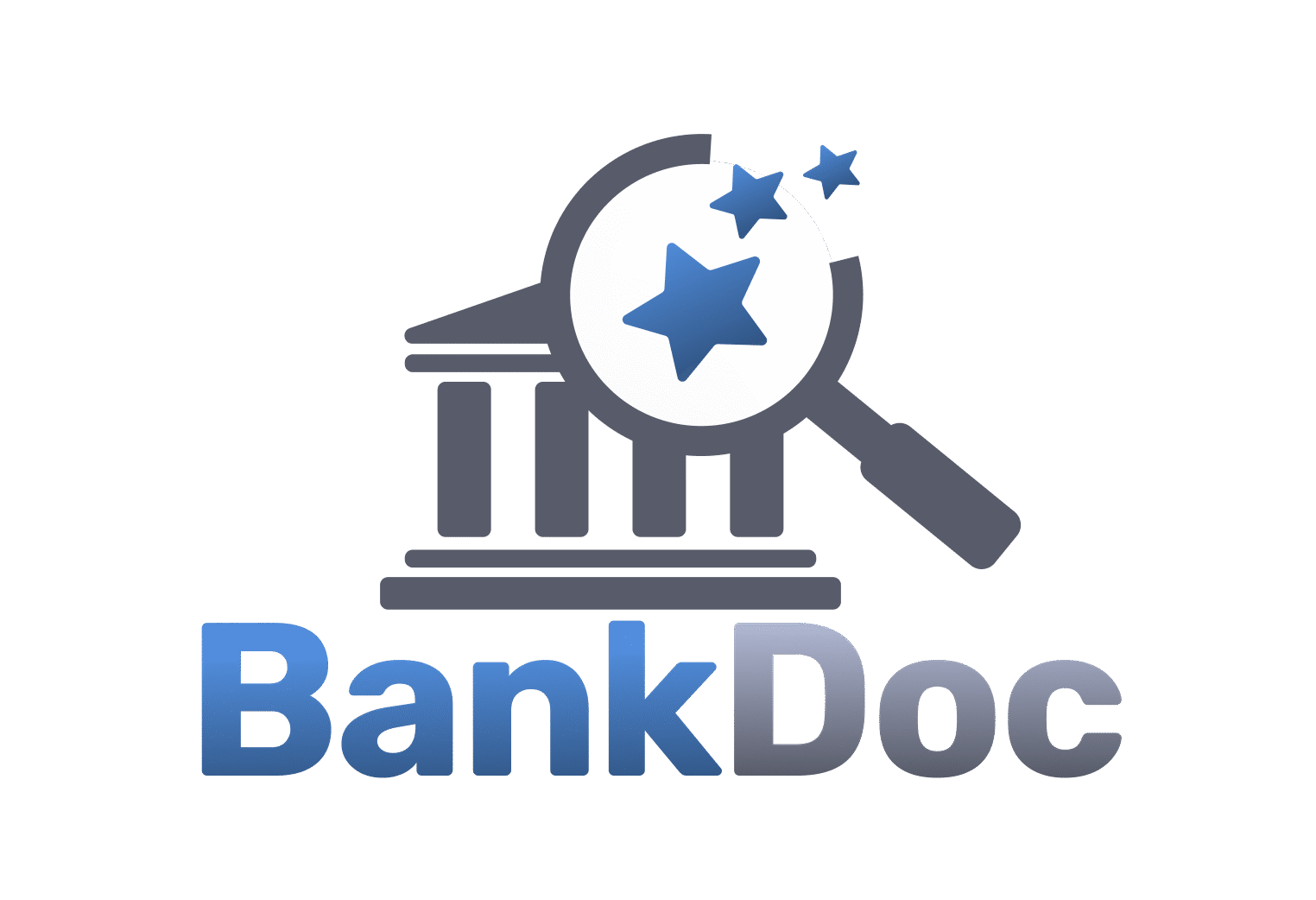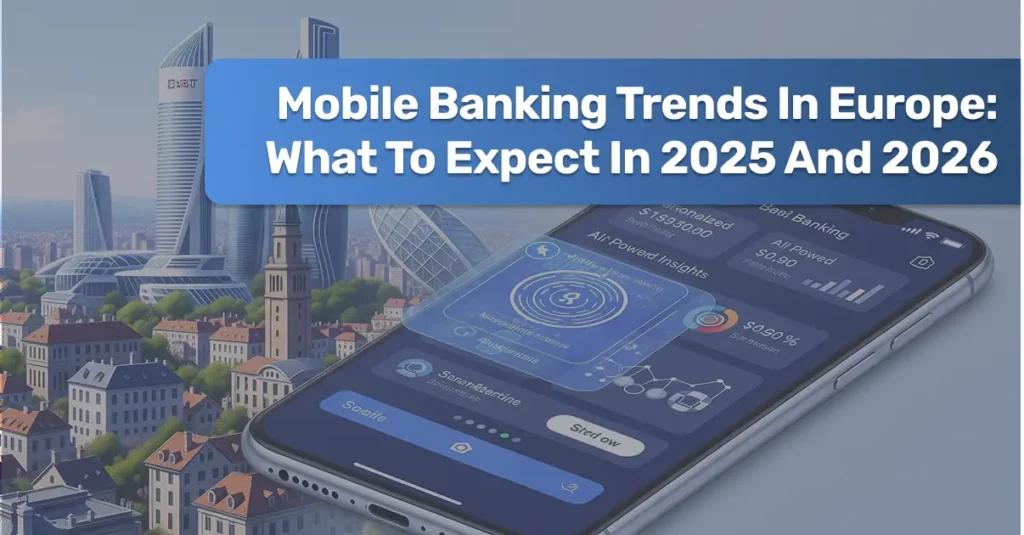Mobile banking in Europe is evolving at lightning speed. With a growing demand for faster, smarter, and more secure digital financial services, 2025 and 2026 are set to bring even greater innovation to how Europeans bank. From AI integration to open banking expansion, the mobile banking revolution is far from over.
- 1. Rise of AI and Predictive Banking
- 2. Biometric Security Goes Mainstream
- 3. Seamless Multi-Currency and Cross-Border Payments
- 4. Sustainability Features in Banking Apps
- 5. Open Banking and API Innovation
- 6. Voice Banking and Chat-Based Interfaces
- 7. Integration with Lifestyle Services
- 8. Cryptocurrencies and Tokenized Assets
- Final Thoughts
- FAQ: Mob. Banking Trends in Europe
In this article, we explore the top mobile banking trends in Europe to watch in 2025 and 2026 – and what they mean for consumers, businesses, and banks alike.
1. Rise of AI and Predictive Banking
Artificial Intelligence will play a major role in enhancing the user experience within mobile apps. Expect banking apps to become smarter, offering:
- Personalized financial advice
- Budgeting suggestions based on spending patterns
- Automated savings plans and alerts
As banks compete on convenience, AI-driven features will be a key differentiator in 2025-2026.
2. Biometric Security Goes Mainstream
Increased concerns around fraud and identity theft are accelerating the adoption of biometric authentication. Mobile banking apps in Europe will continue to roll out features like:
- Facial recognition
- Fingerprint scanning
- Behavioral biometrics (e.g. typing rhythm or how you hold your phone)
These technologies offer a faster and more secure login experience than traditional passwords or PINs.
3. Seamless Multi-Currency and Cross-Border Payments
As Europe remains interconnected, mobile banking apps are improving their multi-currency capabilities. Expect more apps to offer:
- Real-time exchange rate tracking
- Fee-free international transfers (especially within the SEPA zone)
- Cross-border payments via SWIFT, IBAN, and SEPA integrations
With digital nomads and cross-border freelancers on the rise, mobile banks are racing to remove friction in global transactions.
4. Sustainability Features in Banking Apps
Driven by customer demand for transparency and responsibility, many mobile banks in Europe are introducing eco-conscious banking tools, including:
- Carbon footprint calculators based on card transactions
- Green investment options
- Donation features supporting environmental causes
Expect this trend to grow in 2025 and 2026, particularly among Gen Z and Millennials.
5. Open Banking and API Innovation
The EU’s PSD2 directive laid the foundation for Open Banking, and its real potential will be more visible in the coming years. Mobile banking apps will:
- Connect seamlessly to third-party budgeting, investing, and crypto platforms
- Enable users to view and manage multiple accounts from different providers in one place
- Offer customized financial products through integrated marketplaces
Open Banking is setting the stage for more flexible and modular financial services across Europe.
6. Voice Banking and Chat-Based Interfaces
With voice assistants and conversational AI maturing, mobile banks will adopt:
- Voice-enabled money transfers
- Chatbot-based support for 24/7 assistance
- Voice-triggered financial planning tools
This hands-free functionality will improve accessibility and usability for many users.
7. Integration with Lifestyle Services
Expect mobile banks to continue blurring the line between finance and lifestyle. Future apps may include:
- Travel insurance and ticket booking
- Subscription tracking and cancellation tools
- Digital identity wallets and document storage
These all-in-one solutions are especially appealing to younger users seeking convenience and speed.
8. Cryptocurrencies and Tokenized Assets
While regulations vary across EU member states, crypto integration is gaining traction. Some mobile banks already allow:
- Buying and selling of cryptocurrencies like Bitcoin and Ethereum
- Holding stablecoins as part of your savings
- Access to tokenized investments like real estate or green bonds
This trend will likely grow stronger through 2025 and 2026 as regulation catches up with innovation.
Final Thoughts
The future of mobile banking in Europe is smart, secure, and increasingly user-centered. Whether you’re a consumer, business owner, or fintech enthusiast, keeping an eye on these trends will help you stay ahead in a changing digital financial landscape.
If you’re considering switching to a mobile-first bank, be sure to compare options based on security, features, and support of several currency.
FAQ: Mob. Banking Trends in Europe
Expect five major trends: embedded finance integrated into non-bank apps, AI-driven financial assistants, modular app architectures, advanced biometric and behavioral security, and the rise of financial ‘super-apps’ alongside niche solutions
Banks are offering services directly inside platforms like e-commerce, ride-hailing, and payroll apps. This gives users seamless access to loans, payments, and balances without needing a traditional banking app
AI is evolving from basic chatbots to full-service personal finances agents suggesting budgets, flagging subscription creep, optimizing savings, and detecting fraud in real time
Future apps will use separate components (KYC, wallets, analytics) built via APIs allowing faster feature rollout, easier updates, and simpler integration for third-party fintech partners
Biometric login (face, fingerprint, voice) and behavioral biometrics (typing rhythm, gesture patterns) are becoming standard. AI-driven fraud detection will monitor transactions continuously
Yes! apps will increasingly integrate regulated stablecoin transfers, blockchain infrastructure for transparent cross-border payments, and wallets for CBDCs like the digital euro
5G enables instant, low-latency banking. IoT integration means payments and alerts can come via smartwatches, cars, or home devices – enhancing convenience and ‘always-on’ banking

